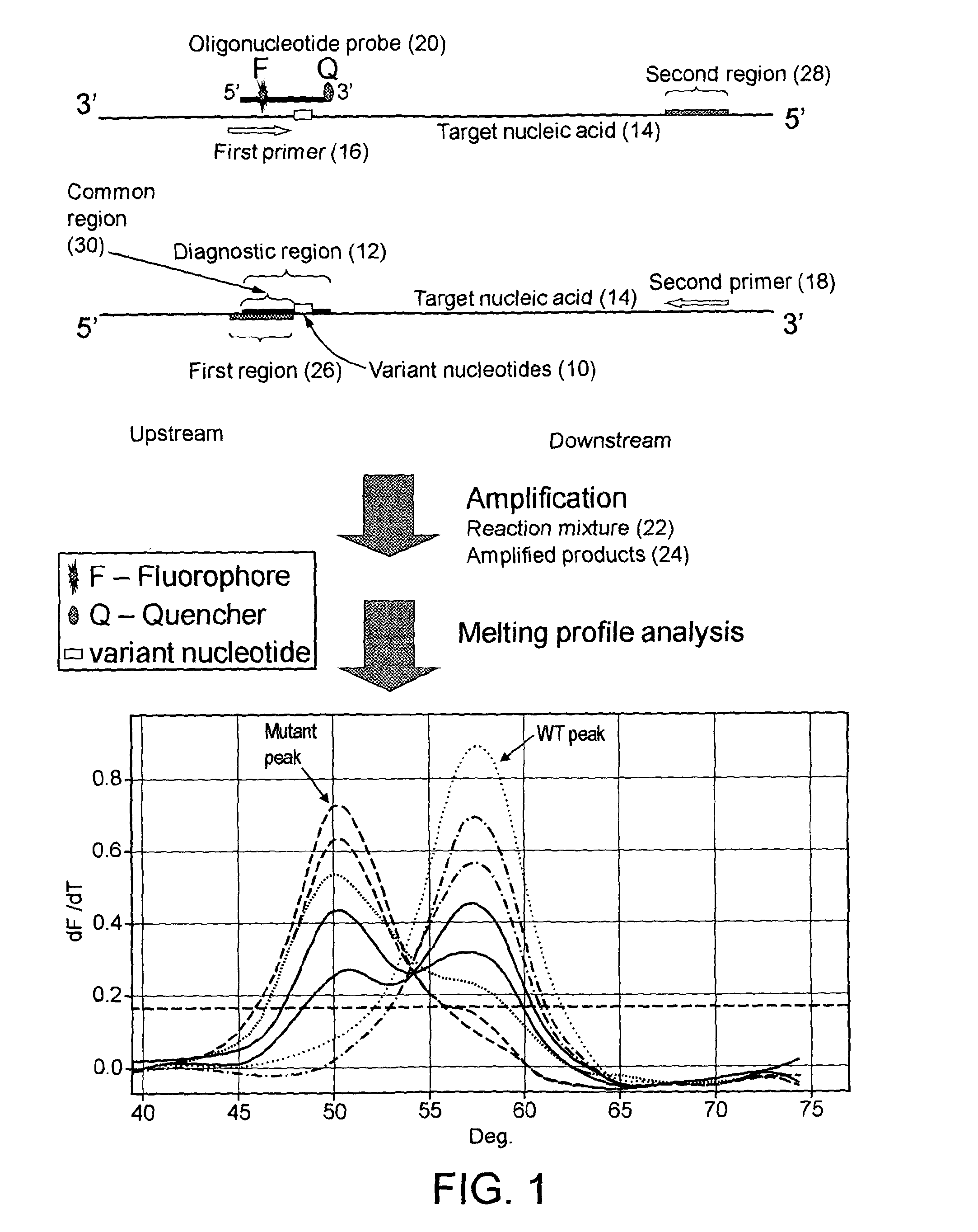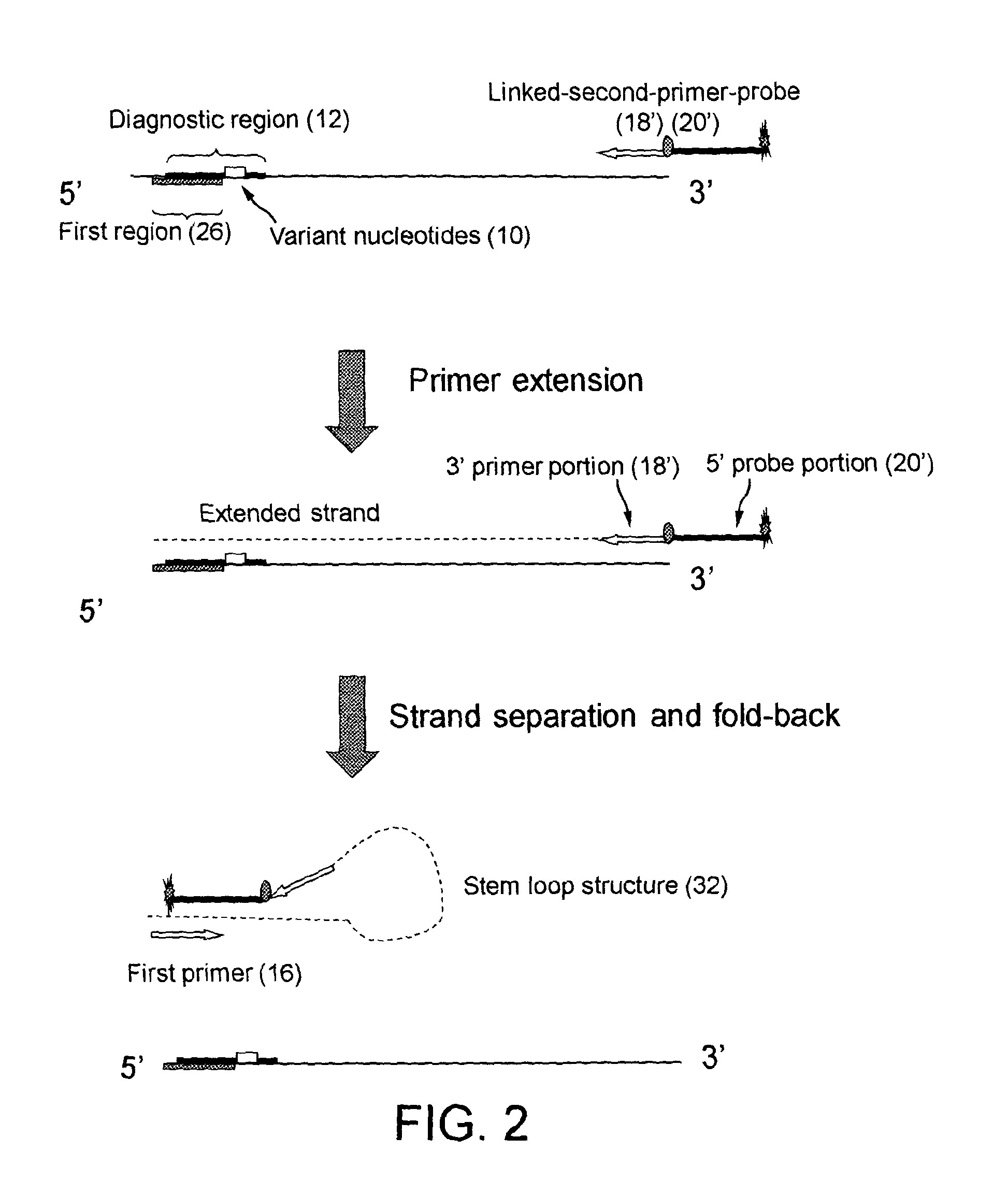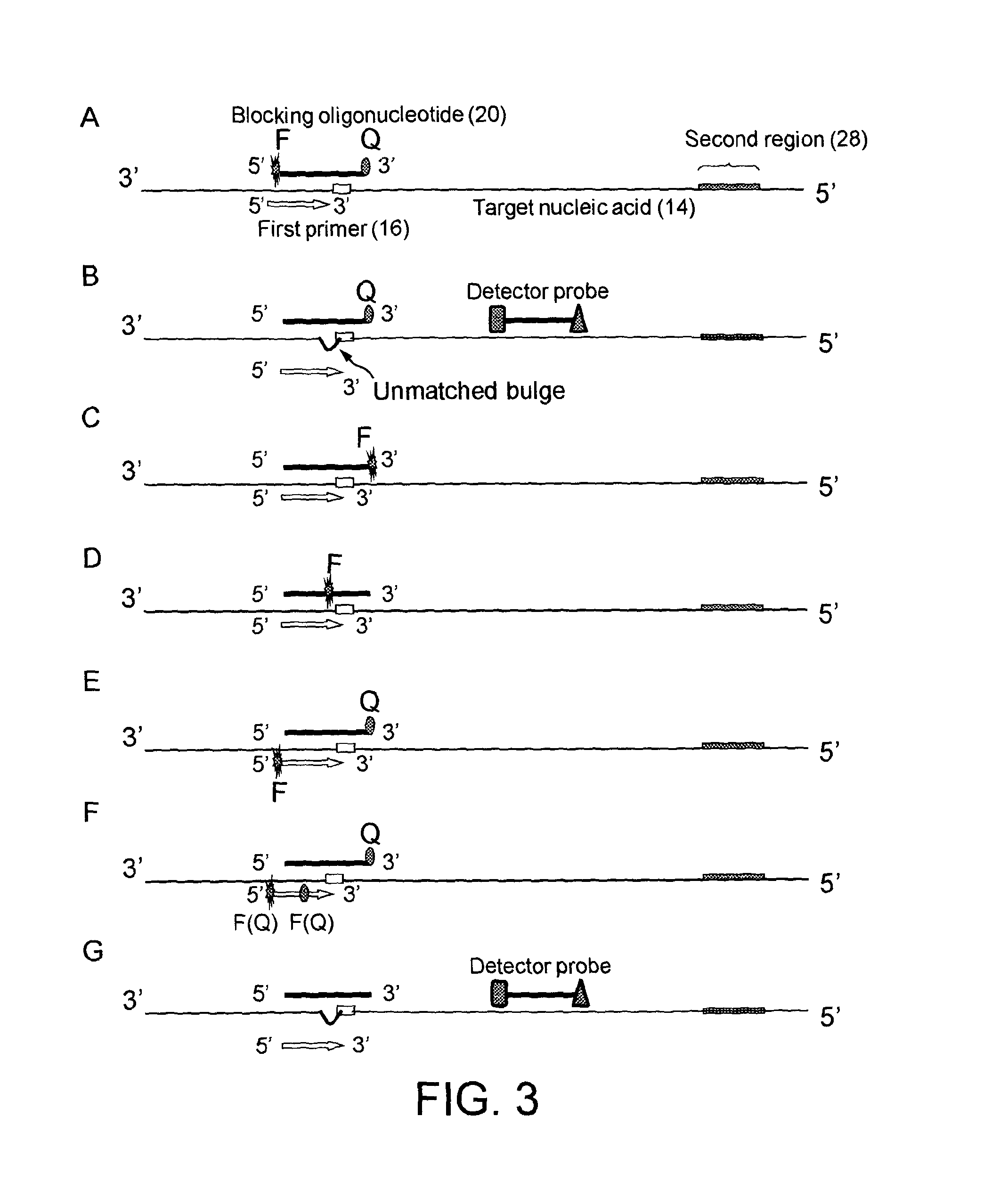Methods, compositions, and kits for determing the presence/absence of a varian nucleic acid sequence
a nucleic acid sequence and dna technology, applied in the field of methods, compositions, kits, to determine the presence/absence of varian nucleic acid sequences, can solve the problems of false positives, inability to accept single methods, and limitations of current approaches
- Summary
- Abstract
- Description
- Claims
- Application Information
AI Technical Summary
Benefits of technology
Problems solved by technology
Method used
Image
Examples
example 1
[0179]EGFR (Epidermal Growth Factor Receptor) signalling pathway causes cell growth and proliferation via several signalling molecules, including KRAS and BRAF. Oncogenic mutations in these genes may cause cancer. Recent evidence indicates that the presence of epidermal growth factor receptor (EGFR) or KRAS mutations in non-small cell lung cancer (NSCLC) can predict the response of the tumour to drugs such as gefinitib.
[0180]In this example, the point mutation L858R in EGFR exon 21 was chosen as a model mutation site to test this technique. Primers and probes were designed to amplify a region containing the mutation site. The forward primer has a 3′ terminus nucleotide right before the mutation site, not overlapping the L858R nucleotide, i.e. the forward primer is not an allele-specific primer. The sequences of forward primers and reverse primers are listed in Table 1. The 5′ part of the probe overlaps some sequence of the forward primers, and its 3′ part contains sequence covering ...
example 2
[0188]In Example 1, the labelled oligonucleotide probe and second primer are separate molecules, i.e. they are not linked. In this example, a linked-primer-probe was used in which the labelled oligonucleotide and the second primer (the reverse primer) are linked together, i.e. they are linked to become a single oligonucleotide (FIG. 2).
[0189]For detecting EGFR exon21 point mutation L858R, the linked-primer-probe, had a sequence:
SEQ ID NO 6.5′ttGATCACAGGTTTTGCTGGCAAACTGCCTTTGCCTCCTTCTGCATGGTA-3′
[0190]It comprises a 5′ probe portion and a 3′ primer portion. The sequence of 3-28 nucleotides is the probe portion, the 26th nucleotide dT is attached with quencher BHQ1. The last 22 nucleotides (3′ part) is the primer portion, serving as primer. The first two nucleotides tt are introduced to mismatch the target sequence. The 5′ end of the linked-primer-probe is attached with fluorescent dye Fam.
[0191]The probe portion in linked-primer-probe matches the wild-type target sequence, which hybri...
example 3
[0193]Kras codon 12 and 13 mutation detection.
[0194]The allele-specific primers are:
SEQ ID NO. 75′ Fam-caaTGGTAGTTGGAGCTGT-3′;SEQ ID NO. 85′-gtgtTGTGGTAGTTGGAGCTGT-3′(Fam-dT at second nucleotide from the 5′ end);SEQ ID NO. 95′ Fam-tcaGTGGTAGTTGGAGCTT-3′(dabcyl-dT at the 9th nucleotide from the 5′end);SEQ ID NO. 105′ Fam-caaTGGTAGTTGGAGCTC-3′;SEQ ID NO. 115′ Cy5-caGaGGTAGTTGGAGCTGA-3′;SEQ ID NO. 125′ cy5-acaGTGGTAGTTGGAGCTA-3′;SEQ ID NO. 135′ Fam-aacGaTAGTTGGAGCTGGTGA-3′(dabcyl-dT at 10th nucleotide from the 5′ end);SEQ ID NO. 145′ Fam-caaaGGTAGTTGGAGCTGC-3′;SEQ ID NO. 155′ Fam-TAAGTTGTGGTAGTTGGAGCTGT(Fam-dT at the 8th nucleotide from the 5′ end);SEQ ID NO. 165′ Dabcyl-taagGTAGTTGGAGCTGGTGA(Fam-dT at the 9th nucleotide);.
[0195]The reverse primer is:
SEQ ID NO. 175′TTACCTCTATTGTTGGATCATATTC-3′;.
[0196]The labelled oligonucleotide probe (blocking probe) is:
SEQ ID NO. 185′ Fam- TGGTAGTTGGCTGGTGGCG-BHQ1-3′; orSEQ ID NO. 195′- GGTAGTTGGATGGTGGCG-BHQ1 3′;.
PUM
| Property | Measurement | Unit |
|---|---|---|
| Fraction | aaaaa | aaaaa |
| Digital information | aaaaa | aaaaa |
| Melting point | aaaaa | aaaaa |
Abstract
Description
Claims
Application Information
 Login to View More
Login to View More - R&D
- Intellectual Property
- Life Sciences
- Materials
- Tech Scout
- Unparalleled Data Quality
- Higher Quality Content
- 60% Fewer Hallucinations
Browse by: Latest US Patents, China's latest patents, Technical Efficacy Thesaurus, Application Domain, Technology Topic, Popular Technical Reports.
© 2025 PatSnap. All rights reserved.Legal|Privacy policy|Modern Slavery Act Transparency Statement|Sitemap|About US| Contact US: help@patsnap.com



